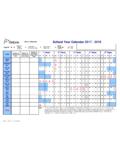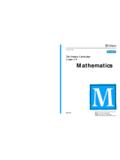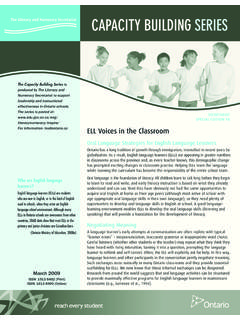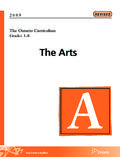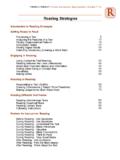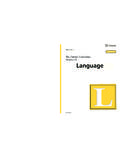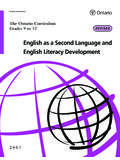Transcription of Shared Solutions: A Guide to Preventing and ... - Ministry of …
1 Shared solutions A Guide to Preventing and Resolving Conflicts Regarding Programs and Services for Students With Special Education Needs Une publication quivalente est disponible en fran ais sous le titre suivant : Cheminer en harmonie : Guide de pr vention et de r solution de conflits concernant les programmes et services offerts aux l ves ayant des besoins particuliers This publication is available on the Ministry of Education's website, at Contents 1 Introduction 5. 2 Overview of Special Education 6. 3 Understanding Conflict 10. Common Responses to Conflict .. 10. Factors Contributing to Conflict .. 11. Reasons for Conflict in Special Education .. 13. Recognizing Warning Signs .. 15. 4 Preventing Conflicts 17. A Positive school Climate .. 17. Effective Communication: The Key to Building Positive Relationships.
2 19. Conflict Prevention Strategies .. 21. 5 Resolving Conflicts 25. Communication Protocol .. 25. Parent Advocacy: Helping Parents to Communicate .. 27. Self-Advocacy: Helping Students to Acquire a Valuable Skill .. 27. The Role of Active Listening .. 28. The Role of Constructive Thinking .. 30. Principles of Successful Conflict Prevention and Resolution .. 30. 4 Shared solutions | 2007. 6 Collaborative Approaches to Resolving Conflicts 33. Problem Solving .. 34. Finding Common Ground .. 37. Using a Facilitator .. 40. 7 Conclusion 42. Appendices 43. APPENDIX A: Roles and Responsibilities in Special Education .. 43. APPENDIX B: Shared solutions on the Go .. 47. References 48. TEAR-OUT SHEET: Shared solutions on the Go .. 51. Introduction 1. The Ministry of Education continues to encourage the use of approaches and strategies that lead to higher achievement for all students in Ontario's publicly funded education system.
3 This resource Guide is intended to help parents,1. educators,2 and students with special education needs work together to prevent conflicts, resolve them quickly, and allow students to develop their full potential and succeed in school . The approaches outlined build on techniques and strate- gies for conflict prevention and resolution that are already in place in many school boards. There are many ways of working through conflict, ranging from informal to formal methods. This resource Guide focuses on informal conflict resolution, which is often the most effective approach and enhances the ability of students, parents, and educators to arrive at Shared solutions . This Guide addresses conflicts affecting students with special education needs, but the strategies it discusses can be used to resolve conflicts for all students, as well as conflicts that arise in contexts outside the education system.
4 The examples included, while based on real situations, use fictitious student names, and any resolution proposed is just one among several possible outcomes. 1. Throughout this Guide , the word parent is used to refer to both parent(s) and guardian(s). 2. Throughout this Guide , the term educator refers to school personnel working within the school setting, such as teachers and principals. Overview of 2 Special Education The provision of special education programs and services in Ontario's publicly funded elementary and secondary schools is mandated by the Education Act and the regulations made under it. This legislation and various Ministry of Education directives and policies set out the terminology, documentation, and process requirements that are used by school boards in the delivery of special education.
5 The children and youth who require special education programs and services are a diverse group. Some students with special education needs are formally identified by an Identification, Placement, and Review Committee (IPRC); others receive special education programs and services without being formally identi- fied. Special education programs and services are designed to enable students to develop knowledge and skills and demonstrate learning, and may include sup- ports that enable experiential learning such as cooperative education place- ments, school -to-work programs, and/or apprenticeship programs. Special Education Programs educational programs that are based on and modified by the results of contin- uous assessment and evaluation and that include a plan containing specific objectives and an outline of educational services that meet the needs of the exceptional pupil.
6 Special Education Services facilities and resources, including support personnel and equipment, neces- sary for developing and implementing a special education program. (Source: Education Act 1990, Definitions ). Overview of Special Education 7. Students with special education needs may require accommodations and/or modifications to the Ontario curriculum, and/or programs or courses with alter- native expectations, or a combination of the three. The following chart defines these three main strategies in the delivery of special education programs. Accommodations Accommodations are the teaching strategies, supports, and/or services that provide students with access to the curriculum and enable them to demonstrate learning. Modifications Modifications are changes made to the grade-level curriculum expectations for a subject or course to meet the needs of the student.
7 Programs and Courses Alternative expectations outline learning related to With Alternative skill development in areas not represented in the Expectations Ontario curriculum policy documents. The elements involved in the delivery of a special education program are out- lined below. Not all parts of this process are applicable to every student with special education needs. An entry-to- school plan is the first occasion for parents and educators, and possibly community partners, to collaborate in the development of procedures to promote a smooth entry to school for children with special education The Identification, Placement, and Review Committee (IPRC) process deter- mines if a student should be identified as an exceptional pupil and states the exceptionality and the appropriate placement that will best meet the stu- dent's strengths and needs.
8 school boards have the discretion to provide spe- cial education programs and services for students who are not formally identified as exceptional. For example, an IPRC is not required when both the school and the parents agree that the student with special education needs should be placed in a regular The Individual Education Plan (IEP) is a written plan outlining the appro- priate special education programs and services to be received by a student with special education needs. For most students with special education needs, the IEP and the Provincial Report Card are interrelated documents, in that achievement of the learning expectations set out in the IEP should typi- cally be clearly recorded on the Provincial Report Card. An IEP must be 3. For more information, refer to Ontario Ministry of Education, Planning Entry to school : A resource Guide , 2005.
9 4. See Ontario Ministry of Education, Memoranda from the Deputy Minister of Education, Special Education Transformation Initiatives , October 12, 2006, and Instructions for Submission of school Boards'/ school Authorities' 2007 Special Education Plans , November 30, 2006. 8 Shared solutions | 2007. developed for students who are formally identified as exceptional and may be developed for students who are not formally identified as exceptional. Parents must be consulted in the development of the IEP. 5 Experience has shown that educators and parents who work together in the development of the IEP. share a common understanding that reduces potential future conflict. The transition plan is another important component of a student's special education program. It helps the student with special education needs make a successful transition from school to further education, work, and community living.
10 The transition plan is a required part of the IEP for students fourteen years of age and older, unless the student is solely identified as Figure 1, below, represents the development and delivery of special education programs and services, including the IPRC process. Consultation with parents and students is important in all parts of the process. Figure 1. DEVELOPMENT AND DELIVERY OF SPECIAL. EDUCATION PROGRAMS AND SERVICES. IPRC*. Assessment, Consultation Evaluation, Development with Parents of IEP. and Reporting and Student to Parents Implementation of IEP. *IEPs can be developed for students with special education needs without an IPRC. (Source: Adapted from VOICE for Hearing Impaired Children, The Individual Education Plan for Students Who Are Deaf and Hard of Hearing A Parent Guide , 2007.)

